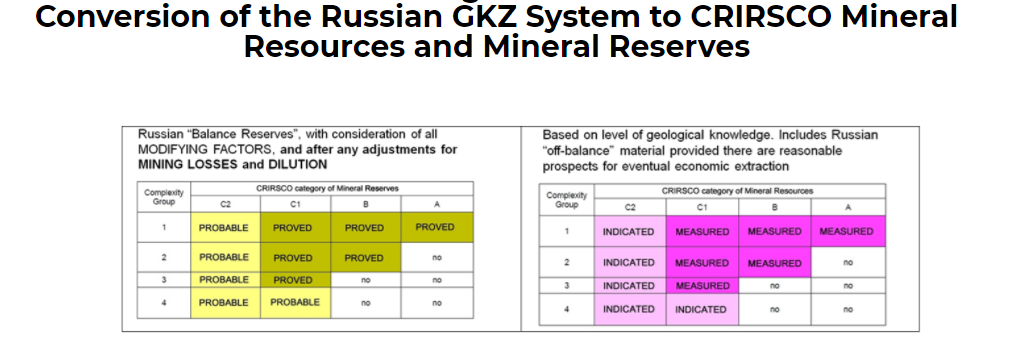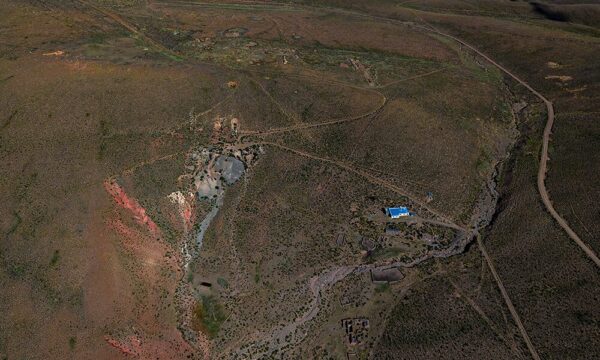In qualitative terms, the principal risks to which Auriant is immediately exposed include geographical/sovereign risk, geological risk, metallurgical risk, engineering risk, funding risk, financing risk and management risk. In general terms, these may be summarised as execution risk ie management’s ability to bring the Tardan CIL and Kara-Belyr projects to account within its geographical jurisdiction and the required technical parameters. Once in production however, these risks will be perceived to have reduced and several other risks, such as commercial, commodity price, foreign exchange and global economic risks will become relatively more pronounced.
Five specific risks, in particular, are pertinent to Auriant and bear further consideration:
■
Tranche 1 funding risk. As discussed previously, a critical sensitivity to Edison’s valuation is the price of the financing of its immediate US$8.3m equity tranche (US$17.2m gross, of which US$9.0m, or 52%, is subject to an equity-for-debt swap by the company’s main shareholder), which could range from SEK3.50/share (the maximum warrant exercise price) to a discount to the current share price. The following Exhibit demonstrates the effect on Edison’s valuation of varying the price at which this financing is conducted (presuming that the price of the second tranche of funding is SEK1.905, or US$0.231, regardless):
Exhibit 15: Valuation sensitivity to Q118 equity funding price
Tranche 1 equity price (SEK) |
1.50 |
1.905 |
2.00 |
2.50 |
3.00 |
3.50 |
Valuation (US$/share) |
0.65 |
0.72 |
0.73 |
0.79 |
0.84 |
0.87 |
Valuation (SEK/share* |
5.37 |
5.95 |
6.03 |
6.53 |
6.94 |
7.19 |
Source: Edison Investment Research. Note: *Converted at the prevailing forex rate of SEK8.2626/US$.
■
Tranche 2 funding risk. Similarly, once the first tranche of equity funding has been successfully concluded, Edison’s valuation of Auriant is then sensitive to the price of its second, subsequent US$9.0m equity tranche (presumed, for these purposes, to be conducted at the start of FY19). On the basis that the first round of financing was conducted at a share price of US$0.231 (SEK1.905) per share, we calculate a pre-money valuation of Auriant as at 1 January 2019 of US$0.94/share, or US$0.86 as at 1 January 2018, on which basis we have conducted a series of sensitivity calculations for varying second tranche pricing, as shown in Exhibit 16. Readers should note the point of equivalence between the pre-money and post-money valuations at a funding price of US$0.84/share (the right hand column in Exhibit 16) and its similarity to Edison’s pre-money valuation estimate of US$0.86/share (above), which confers confidence in both these valuations and those in Exhibit 15.
Exhibit 16: Valuation sensitivity to late FY18/early FY19 equity funding price
Tranche 2 equity price (US$) |
0.231 |
0.35 |
0.50 |
0.65 |
0.80 |
0.84 |
Tranche 2 equity price (SEK) |
1.905 |
2.89 |
4.13 |
5.37 |
6.61 |
6.94 |
Valuation (US$/share) |
0.72 |
0.77 |
0.81 |
0.83 |
0.84 |
0.84 |
Valuation (SEK/share* |
5.95 |
6.36 |
6.69 |
6.86 |
6.94 |
6.94 |
Source: Edison Investment Research. Note: *Converted at the prevailing forex rate of SEK8.2626/US$.
■
Geological and metallurgical. In common parlance, mineralisation at Tardan might be described as “narrow, wiggly and lacking in continuity”, which can make the deposit difficult to exploit from a mining perspective and subject to material swings in profitability. In addition, Tardan is composed of a number of different styles of mineralisation, which may be amenable to different forms of processing (eg gravity or heap leach), which has historically introduced an additional level of complexity to operations there. As a result, the Tardan deposit is often perceived as being ‘difficult’ from a commercial standpoint. However, much of this combined geological & metallurgical risk will be mitigated by the more consistent throughput and recoveries engendered by the adoption of universal CIL processing. In addition, some of the risk will be further mitigated by management’s experience in successfully operating the project to date or by its operating similar projects nearby in the region. Nevertheless, management will still need to oversee the careful blending of ore types from different sources through the CIL plant in future in order to optimise financial returns to shareholders.
■
Stage of development. While the Tardan CIL project represents a brownfields expansion of an existing operation (and risk is therefore mitigating by existing experience and acquired knowledge), Kara-Beldyr is effectively a greenfields development of a new prospect that is currently (effectively) only at the pre-feasibility (PFS) stage of advancement. While a degree of this risk will eventually be mitigated by the completion of a definitive feasibility study (DFS), until it is in production, this project will inevitably have a higher level of risk associated with it than Tardan. Moreover, given our funding assumptions (ie Auriant implicitly debt funded after the second tranche of equity funding in late FY18/early FY19), the success of the Tardan CIL project will be critical to the company’s ability to then develop Kara-Beldyr.
■
Financial risk. As at 31 December 2017, Auriant had US$70.2m in net debt on its balance sheet and US$19.7m in negative equity (rendering gearing and leverage calculations effectively un-meaningful). This risk is mitigated by the fact that approximately half of Auriant’s net debt is held by its largest shareholder, Preston Haskell IV. Nevertheless, Auriant’s relationship with its lenders (in this case, Russia’s third largest bank, VTB, with which it refinanced its debt in Q317) is of material importance to its equity investors into the immediate future. Note that, notwithstanding an anticipated US$17.2m equity raise in Q118 (albeit 52% of the subscription rights will be swapped for a reduction of the main shareholder’s debt), we estimate that Auriant will remain in a net negative equity position as at the end of FY18, but that this will revert to net positive equity after a second round of equity funding in the sum of US$9.0m in early FY19 (as per Edison’s ‘base case’ scenario).
■
Geographical/sovereign risk. It is assumed that investors are aware that there are certain risks inherent in investing in Russia at the current time, including the issue of sanctions, which could, among other things, complicate the import of capital goods. However, to date, management states that the issue of sanctions has had no material or discernible effect on its operations. In the meantime, from a quantitative perspective, Russia scores 69.02 in the Fraser Institute’s 2016 survey of mining Investment Attractiveness (cf a mean score of 62.83) and ranks 44 out of a population of 104 (ie it scores within the upper half of the population of mining jurisdictions):
Exhibit 17: Fraser Institute 2016 survey of mining investment attractiveness (Russia highlighted)
|

|
|
|
From a quantitative perspective meanwhile, Auriant’s valuation varies with metals prices, costs, the discount rate and foreign exchange rates, as shown in the tables below.
Exhibit 18: Auriant discounted dividend NPV sensitivity to gold prices (US$/share)
Metals prices change |
-20% |
-10% |
Base case |
+10% |
+20% |
NPV (US$/share) |
0.16 |
0.43 |
0.72 |
1.00 |
1.29 |
Change in NPV vs ‘base case’ (US$/share) |
0.56 |
-0.29 |
u/c |
+0.28 |
+0.57 |
Percent change in NPV (%) |
-77.8 |
-40.3 |
N/A |
+38.9 |
+79.2 |
Source: Edison Investment Research
Exhibit 19: Auriant discounted dividend NPV sensitivity to unit costs (US$/share)
Unit costs change |
+20% |
+10% |
Base case |
-10% |
-20% |
NPV (US$/share) |
0.45 |
0.58 |
0.72 |
0.85 |
0.99 |
Change in NPV vs ‘base case’ (US$/share) |
-0.27 |
-0.14 |
u/c |
+0.13 |
+0.27 |
Percent change in NPV (%) |
-37.5 |
-19.4 |
N/A |
+18.1 |
+37.5 |
Source: Edison Investment Research
Exhibit 20: Auriant discounted dividend NPV at varying discount rates (US$/share)
Discount rate (%) |
0% |
5% |
10% |
20% |
NPV (US$/share) |
2.01 |
1.18 |
0.72 |
0.29 |
NPV (SEK/share)* |
16.61 |
9.75 |
5.95 |
2.40 |
Source: Edison Investment Research. Note: *Converted at the prevailing forex rate of SEK8.2626/US$.
Stated alternatively, Auriant’s current share price of SEK1.905 (as of market close on 2 March 2018), or US$0.231, implies a discount rate applied to its forecast future dividends of 23.0% ie at the current price the shares offer investors a potential investment internal rate of return of 23.0% (fully diluted).
With respect to foreign exchange rates, the relationship between the rouble and the US dollar has a direct causative effect on margins (costs typically being denominated in roubles, whereas revenues are denominated in US dollars) and is therefore significant in terms of its effect:
Exhibit 21: Auriant discounted dividend NPV at varying RUBL/US$ rates (US$/share)
RUBL/US$ rate |
51.0395 |
56.7106 |
62.3817 |
Change (%) |
-10.0% |
0.0% |
+10.0% |
NPV (US$/share) |
0.56 |
0.72 |
0.84 |
Change in NPV vs ‘base case’ (US$/share |
-0.16 |
u/c |
+0.12 |
Percent change in NPV (%) |
-22.2 |
N/A |
+16.7 |
Source: Edison Investment Research
Note the similarity in Auriant’s valuation sensitivity to the rouble to changes in unit costs, which is consistent with its operational cost base being denominated almost entirely in local currency terms.




























